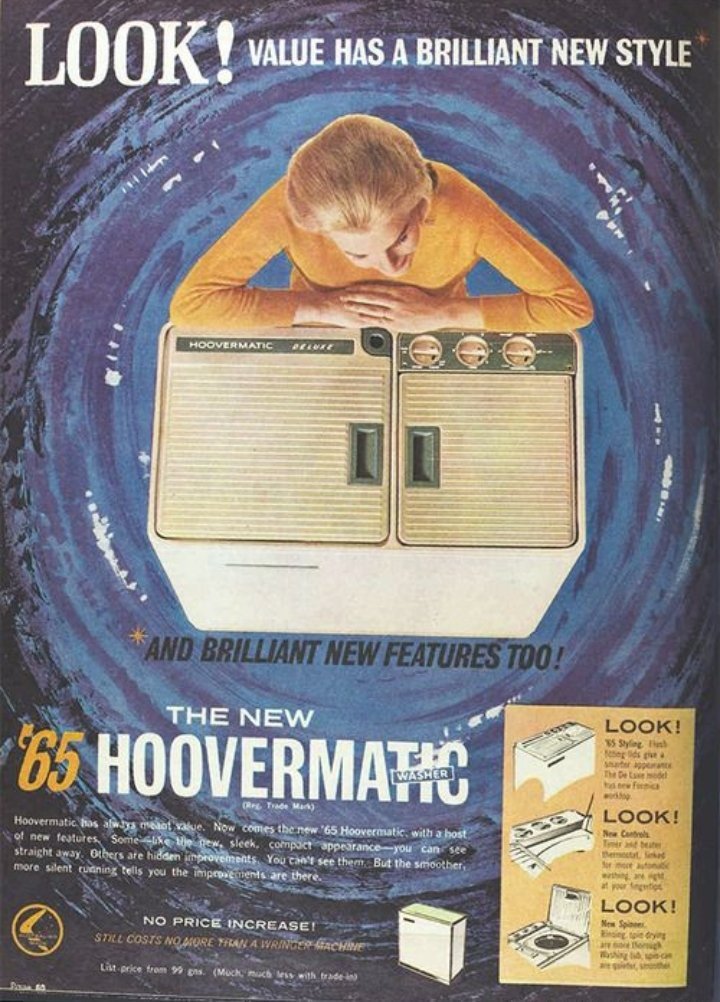Did you have a twin tub? It was the miracle of 1960s washing machine technology that literally shook the kitchen!
Let's take a look at it...
Let's take a look at it...
The twin tub bridged the gap between the mangle washers of the 1950s and the front loaders of the 1970s. Finally the days of cranking washing between two rollers to wring it out were long gone! 

A twin tub is just that: a washing machine with two upright tubs - one for washing, one for spinning. Genius! 

It also needs no plumbing in. You fill a twin tub with a hose that fits on any sink tap. Then it heats up the water - and I mean heat! In the '60s we liked to properly boil our washing. 

First you did your whites: pop them in the first tub and let the agitator do the rest...
Once they had been scrubbed, boiled and violently agitated in a seething maelstrom of Daz you dropped them into the spinner tub...
Then you retreated to a safe distance! The spinner really shook the room, but it also recycled the water back into the washer tub teady for the next load. It was simple, economical and very thorough.
Twin tub washing machines may seem a faff nowadays, but compared to the tub and mangle washing they were a genuine godsend for families.
And they had other uses...
And they had other uses...

Because the twin tub could heat water and then pump it out it was a quick and convenient way to fill the bath up on Friday nights - no more waiting for the gas water heater to do the job! 

A good twin tub wasn't cheap. However they did last: top loaders are less complex than front loaders, plus you don't need to plumb them in. 

There are still many people who swear a good twin tub washes better than any modern upright. They certainly steam the kitchen up, but they do recycle the water. 

So here's to the twin tub: it was the true soundtrack to the '60s in so many ways!
More inventions another time...
More inventions another time...

• • •
Missing some Tweet in this thread? You can try to
force a refresh























